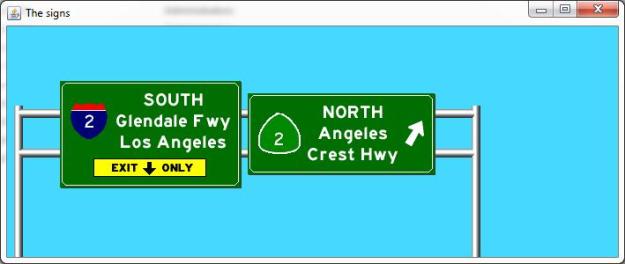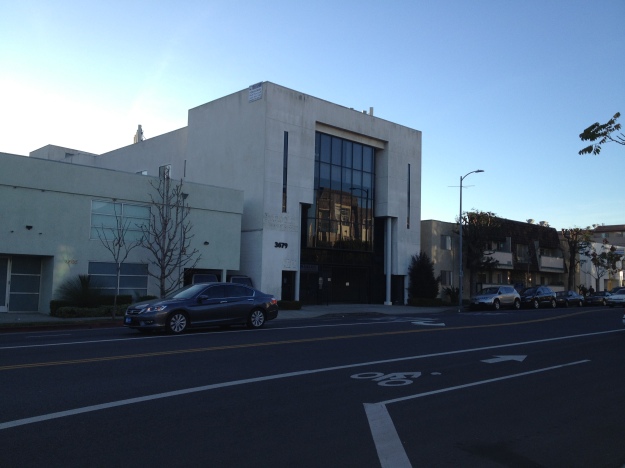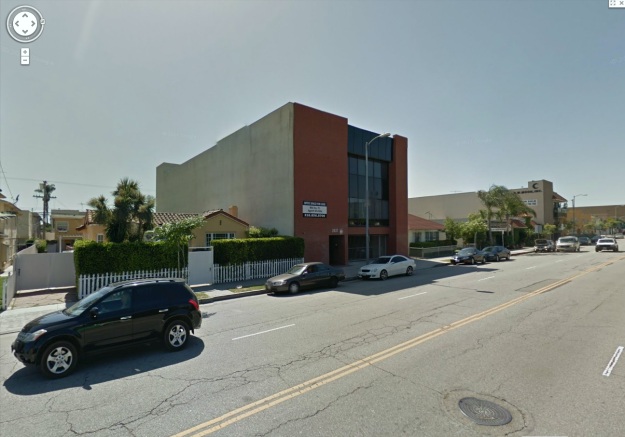Why is the cost of building transit projects in the US anomalously high? Alon Levy has been doing yeoman’s work at this for a while, and in the last year or so it’s received attention from more prominent writers, like Stephen Smith of Market Urbanism and Matt Yglesias.
Step 1 is admitting you have a problem. So it’s important for people with a national platform to keep hammering away at increasing recognition of the issue. For the more technically inclined folks (read: academia and the blogosphere), the logical next step is trying to figure out why we have a problem.
In that spirit, here’s a first shot at enumerating the reasons, along with a brief description of each. Getting to the bottom of this problem is not going to be easy – it’s going to involve investigating each of these factors in detail. That means talking with people all over the world about how they approach, design, and construct transit projects, and breaking down where costs come from. But it’s something that needs to be done. As the federal government cuts its involvement, cities are increasingly relying on self-financing. Building more transit for less money is critical to making the projects worthwhile and building public trust. It has to be done.
Some of these are probably non-factors. Others probably make in difference in some places but not others. This is just a first attempt at identifying things to look at. Without further delay. . .
Lawyer Up
We pretty much have to start here, don’t we? Others have suggested that high costs are a feature of common law systems. Any major transit project in America is at risk of getting sued. The ridiculous California v. All Persons Interested case where the CAHSRA preemptively filed suit against, theoretically, the entire world pretty much sums it up. In addition, threat of lawsuit is going to be a common contributing factor in many of these potential reasons.
Lack of Agency In-House Talent
Back in the 50s and 60s, state DOTs did a lot of their highway engineering in-house – the iconic LA interchanges, the most advanced of their time, were done by Caltrans. Same goes for the privately operated railroads; in their heyday, they had big in-house engineering departments. Today, virtually all project management, design, and construction oversight is done by outside consultants, and consultant advocacy groups lobby government officials to keep it that way.
The use of outside consultants is not necessarily a bad thing. You could argue that it just reflects increasing economic specialization, and spares the agencies the need to hire people for a specific project and lay them off when the project is done. That’s especially true for things that agencies don’t do a lot or do consistently, like building transit projects.
The problem is that most agencies now have little in-house talent, so they may not know if their consultants are doing a good job or not. This is true from the bottom, where agency engineering positions pay less than outside consulting and consequently make it difficult to retain talented people, to the middle, where agency PMs are likewise paid too little, to the top, where some agencies are run by political appointees who don’t know enough about transportation.
Depending on your political persuasion, you might blame this on (a) government work rules that make it impossible to get rid of incompetent employees or (b) consistent underfunding that prevents agencies from offering pay that could compete with the private sector. Both are probably factors in varying degrees. Either way, the result is that you end up with. . .
Consultants Checking Consultants Checking. . .
The organizational structure of a major transportation project today probably goes something like this: the agency hires a program manager consultant to study the project and take the design to a preliminary level. The agency then hires another consultant (or a design-builder) to complete the design. That consultant’s work is checked by the program manager consultant or a third-party consultant that the agency has contracted for design review. When the project goes to construction, yet another consultant is hired as the construction manager, to oversee the contractor’s work.
Combined with sparse in-house resources, this creates the potential for wasting public money. To understand why, you need to consider consultant motivation.
Consultant Conflicts of Interest
Many people seem to assume that consultants are interested in getting projects accomplished as efficiently and cost-effectively as possible.
But what is the consultant’s motivation? Really, like any private firm, the motivation is to get paid as much money as possible for as little work as possible. If agencies don’t have the in-house talent to know what their consultants are doing, they might end up paying more than they should. This motivation goes right down to low level employees in consulting firms. Businesses have profitability goals, and that means consulting firm staff have billability targets – that is, they must charge a certain amount of their time to particular projects. Staff know that if they don’t hit their billability target, they’ll eventually get laid off, so their personal incentive is to charge projects as much as they need to in order to hit that target. Better to have a job and go ask the agency for more money than be out on the street, right?
Consulting firms also set up different teaming arrangements with each other on different projects to take advantage of differing specialties among firms. This creates a natural conflict of interest where Consultant A is reviewing Consultant B’s work on one project, but hoping to get on a team with Consultant B on another project. Engineering consulting is a small world, and you can’t afford to be on bad terms with other firms if you hope to team with them for other work. Contrast that with agency in-house review, which has no such conflicting incentive.
Consultant Liability
As anyone in private business knows, one of the fastest ways to lose money is to get hit with lawsuits. For example, if someone gets hit by a train at a grade crossing, they might sue the railroad, the engineering firm that designed the grade crossing, the contractor that built it, the manufacturer that made the equipment, or any combination thereof.
Public agencies often enjoy liability limits set by the state, but consultants don’t. If you work for a consultant and you propose something that doesn’t meet standards (MUTCD, AASHTO, AREMA, NFPA, whatever they may be), your boss may ask you something like “and what’s your answer going to be when you’re on the witness stand and the plaintiff’s lawyer asks you why you didn’t meet the standard?”
Again, think of the consultant’s motivation. If they design everything to standard and it costs extra money, it’s not their money that gets spent. If they design something that doesn’t meet standards, they potentially expose themselves to significant liability. What would you do? There’s a reason some consultants think the best project is the project that never gets built.
Interagency Graft
One of the most frustrating things about transportation projects is that they require coordination between many different government agencies. A transit project probably involves, at minimum, the regional agency responsible for building transit, city DPWs or DOTs, water & sewer districts, utilities, and perhaps a state transportation agency. Theoretically, these agencies are all part of the same team. In practice, agencies often operate as fiefdoms, each defending its own turf and trying to extract concessions from others.
For example, let’s say I’m the head of a DPW, and you’re the transit agency who’s going to build a surface running LRT. I’m years behind on my pavement resurfacing schedule, and the sidewalks on the street you want to run on are a disaster. Half the loop detectors at my traffic signals are broken and the controllers are 40 years old anyway. By rational accounting, your project should only owe me for the present value of my decrepit infrastructure. But guess what? You need a permit from me to work in my ROW. So it looks like you just bought yourself full depth reconstruction of my road and all new traffic signals.
We caught a glimpse of this recently when the cost estimate for the LA Streetcar doubled due to utility relocation, which opponents pounced on to question the project and proponents protested as unnecessary. Regardless of what you think of the project, it’s likely that utilities, both public and private, will try to squeeze as much new infrastructure out of the streetcar project as possible. OPM, dude.
Intra-agency Graft
Different departments within an agency might try to do the same thing. In most agencies, capital projects are a separate department from operations and maintenance. This can impact projects in two ways. First, as with interagency demands, the costs of backlogged maintenance can foisted onto the capital project. For example, the MBTA Green Line Extension is probably going to have to do work on the century-old Lechmere Viaduct, despite the fact that repair work was done only 10 years ago and the work isn’t necessary for the extension (other than that if the viaduct falls down, the extension will be useless).
Second, maintenance and operations departments might ask for capital infrastructure on the new project to make their lives easier. For example, the Red Line, Blue Line, and Gold Line don’t have crossovers between every station. But the Expo Line does. That makes maintenance work easier and facilitates single-tracking for operations, but are all those crossovers really necessary?
Make Hay While the Sun Shines
The old saying goes that politicians see about as far as the next election. It follows that transit agencies, which are often political entities, might have about the same planning frame. Also, because US politicians seem to lurch from crisis to crisis, throwing money at problems only when they become severe, agencies may operate in a feast or famine mode.
That means that when they have money, they are often anxious to spend it. In the absence of reliable long-term funding and planning – like, say, Measure R – the incentive is to spend the money before someone like Chris Christie or John Kasich gets elected and pulls the plug on the whole thing.
Preemptive Mitigation
The potential for lawsuits can induce preemptive mitigation measures for two reasons: first, if you give opponents enough, they might not sue you. Second, if they sue, you can show that you’ve made a good faith effort to reduce the impact of your project. Maybe you don’t really need four-quadrant gates and quiet zones; maybe it’s really not worth it to build retaining walls to save a few square feet of wetland. But you do it anyway to try to avoid potentially larger costs of lawsuits and delays.
Legally Mandated Mitigation
If you get sued, there’s always the possibility that the court could impose costly mitigation measures. For example, Metro had success in defending the Expo Line against lawsuits demanding grade separations at Farmdale, Overland, and Westwood. As it is, Metro was forced to build another surface level station at Farmdale (not cheap, but low impact in terms of price per mile) and got stuck with a nuisance speed restriction. But if those cases had gone the other way, the costs would have been much higher.
Union Rules
I don’t know much about union rules, but it’s been suggested elsewhere that unique characteristics of US unions & work rules result in very inefficient use of labor. Certainly, on the operations side, unions consistently oppose labor-saving reforms. Unions have probably also been conditioned to try to get as much work for their members as possible while the political winds are favorable.
Crappy Transit Activism
I don’t know anything about transit activism in countries outside the US. But there are people in the US that will defend transit projects no matter how poorly they are planned and/or executed. Alon Levy already wrote about this issue so I won’t go into more detail.
Coattail Riding
Lastly, huge public works projects are convenient places to tack on other desired improvements that might seem expensive in their own right, but aren’t that much relative to the big project. For example, the MBTA Green Line Extension project might end up building part of the Somerville Community Path, and the Expo Line Authority is building some of the Expo Corridor bike paths.
That’s not to say those are bad projects; I’m all for the Expo bike paths. But as a matter of accounting, that adds unrelated costs to the transit project.
Next Steps?
That’s about all I can think of for now. Again, this is just an attempt to identify potential causes for high US transit costs. Some may not be factors, some might be inconsequential factors, and no doubt I’ve forgotten others. If any transpo grad students out there are looking for research topics, feel free to take up a couple of them 😉
Update 3/12/14:
On Twitter, The Tysons Corner suggested that public cost estimates early in the process (conceptual design, preliminary engineering) set a floor for contractor bids. IMHO, that is a valid point – after all, the motivation for contractors is not to submit the lowest possible bid, but a bid $1 less than the second lowest bidder. You often hear contractors talk about how winning bidders “left money on the table” when there was a big spread between the lowest and second lowest bids. On the other side, engineers hate getting burned by costs coming in too high, so they’re motivated to inflate their estimates early on in the process. However, as long as these projects are being built by public agencies, the documents are public records, so I don’t see any way out of publishing some sort of cost number at each stage of design, and cost is obviously an important factor for the public to decide if the project is worthwhile.







































